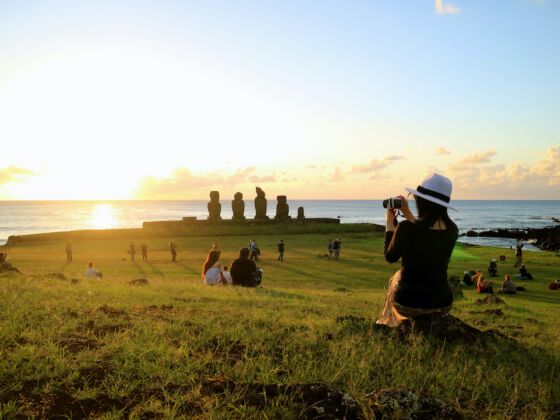Rapa Nui (Easter Island) is a small volcanic island halfway between Oceania and South America. It’s mostly famous for the Moai, massive human figures carved from stone by the Rapa Nui people between 1250 and 1500 AD.
I’m lucky to have recently visited this tiny dot of an island in the middle of the vast Pacific Ocean. It was an immersion into an unexplored culture, where you can ride a horse all the way up a volcano and hear stories about the Birdman religion and sacred ceremonies. Among other things:
